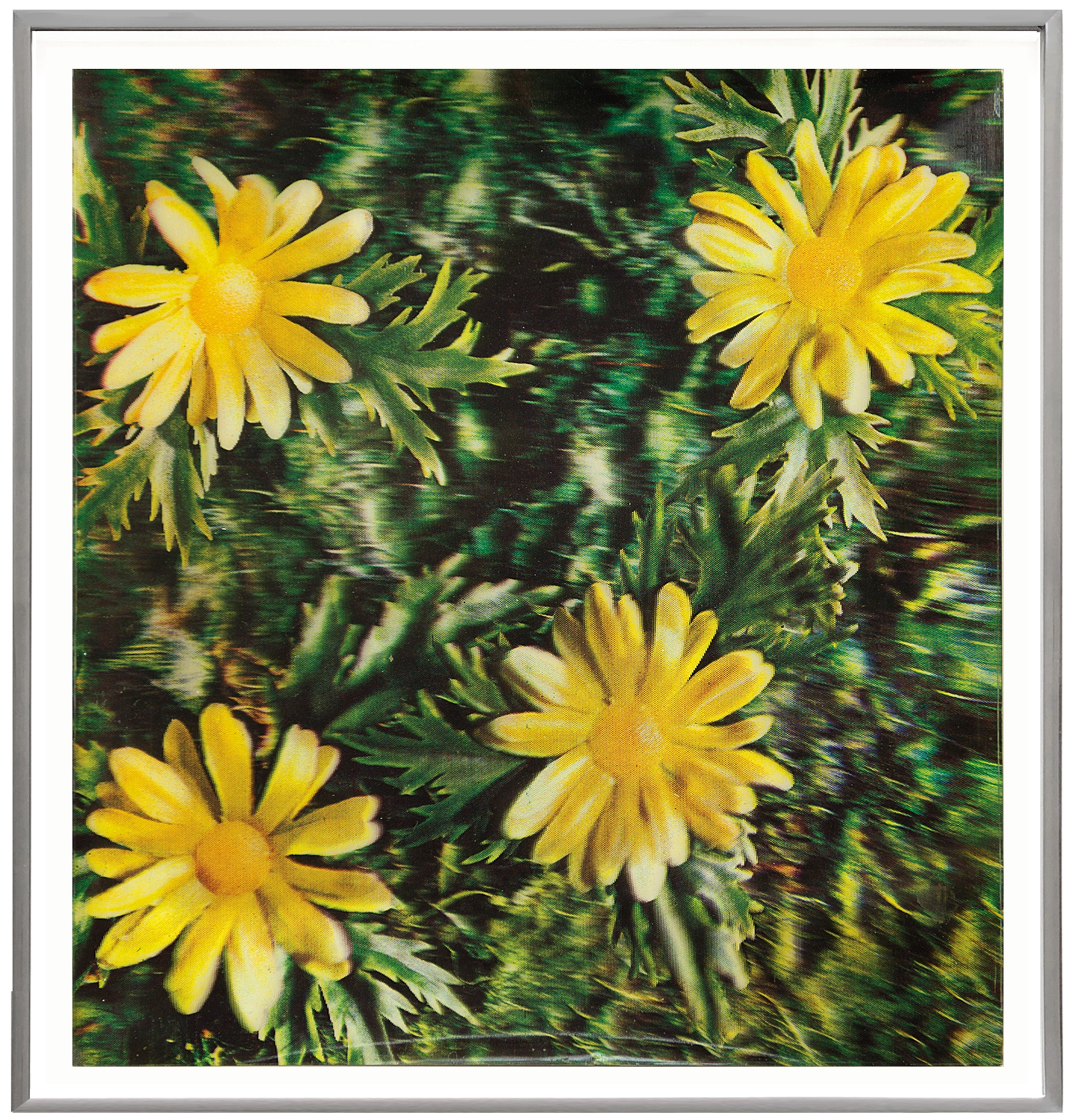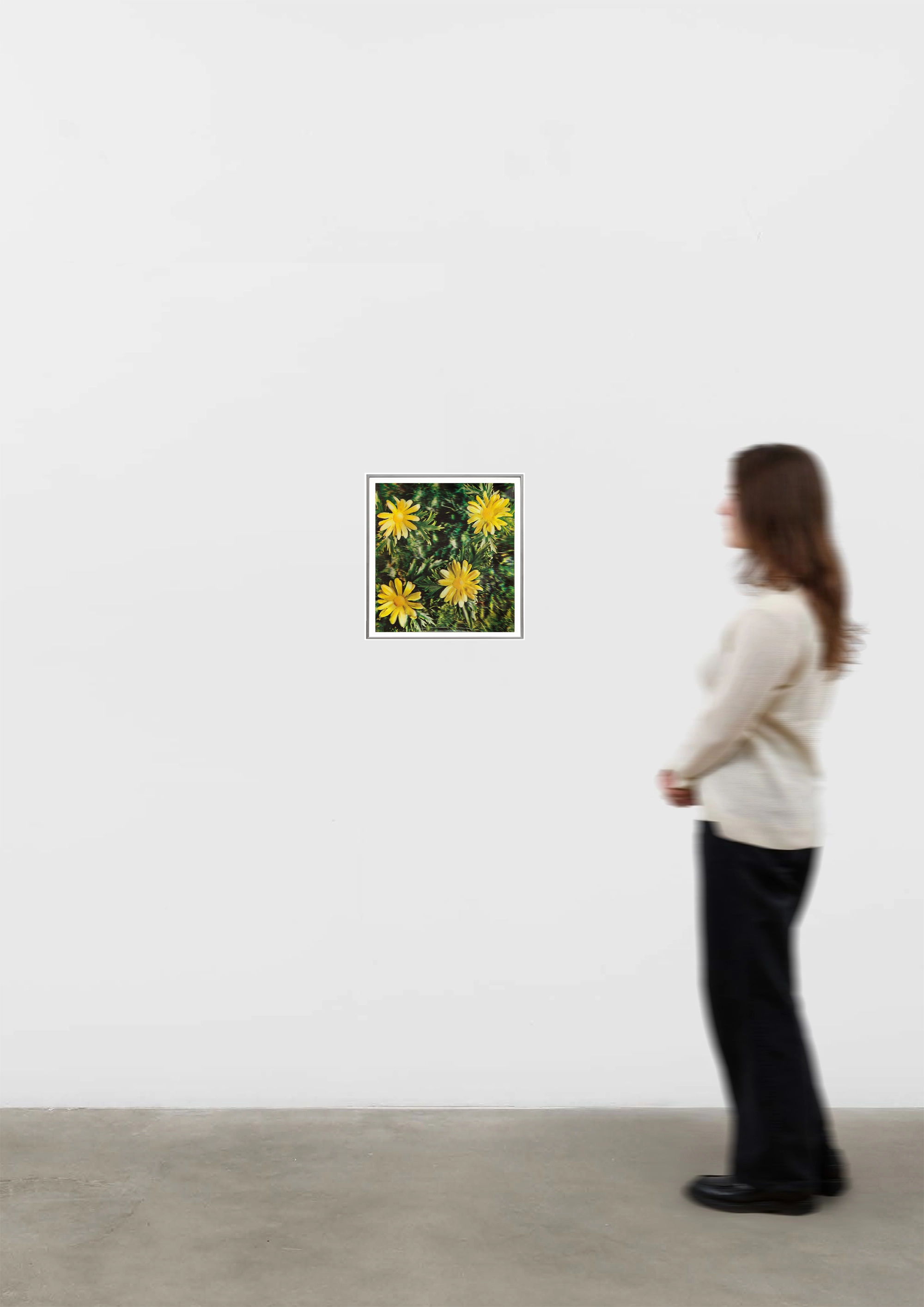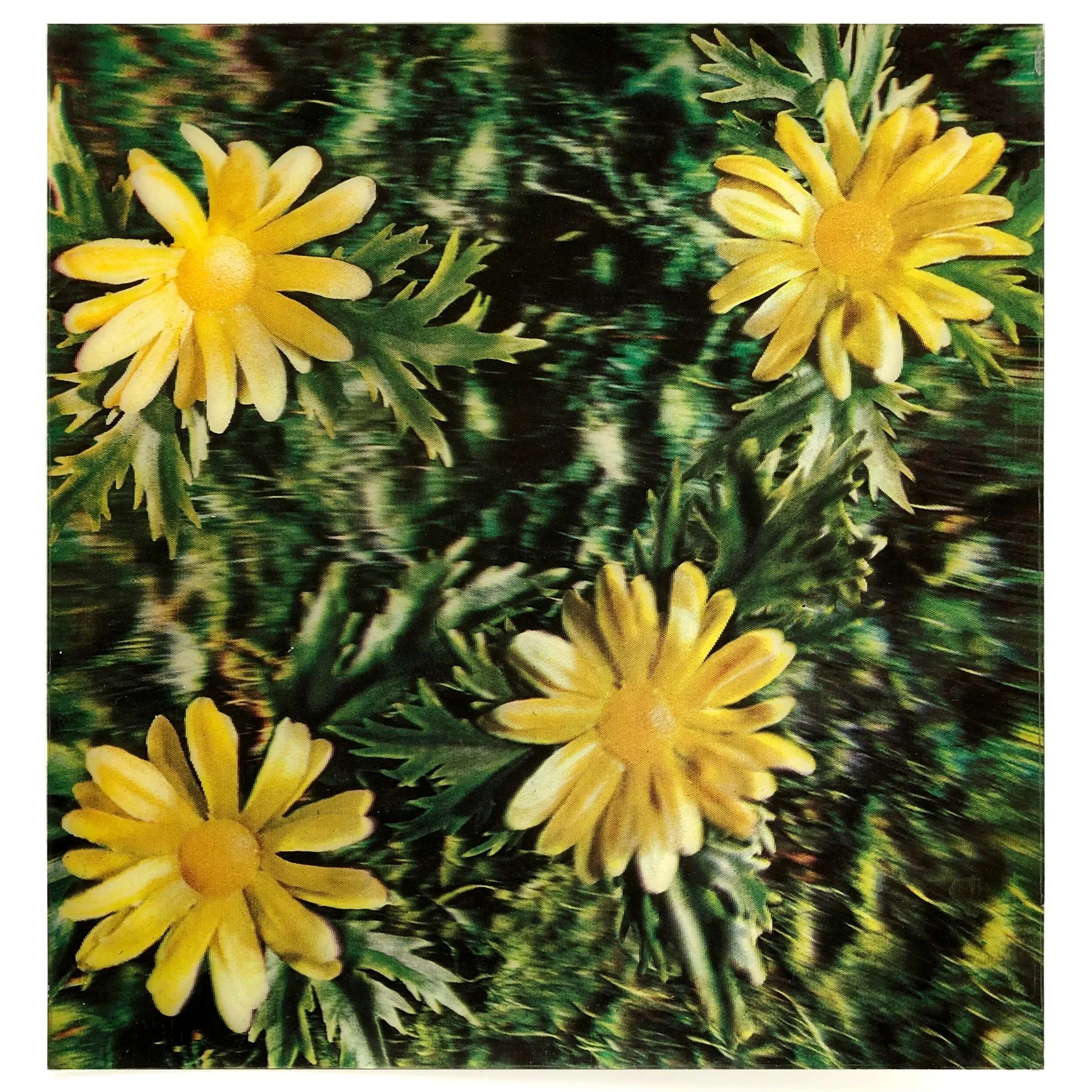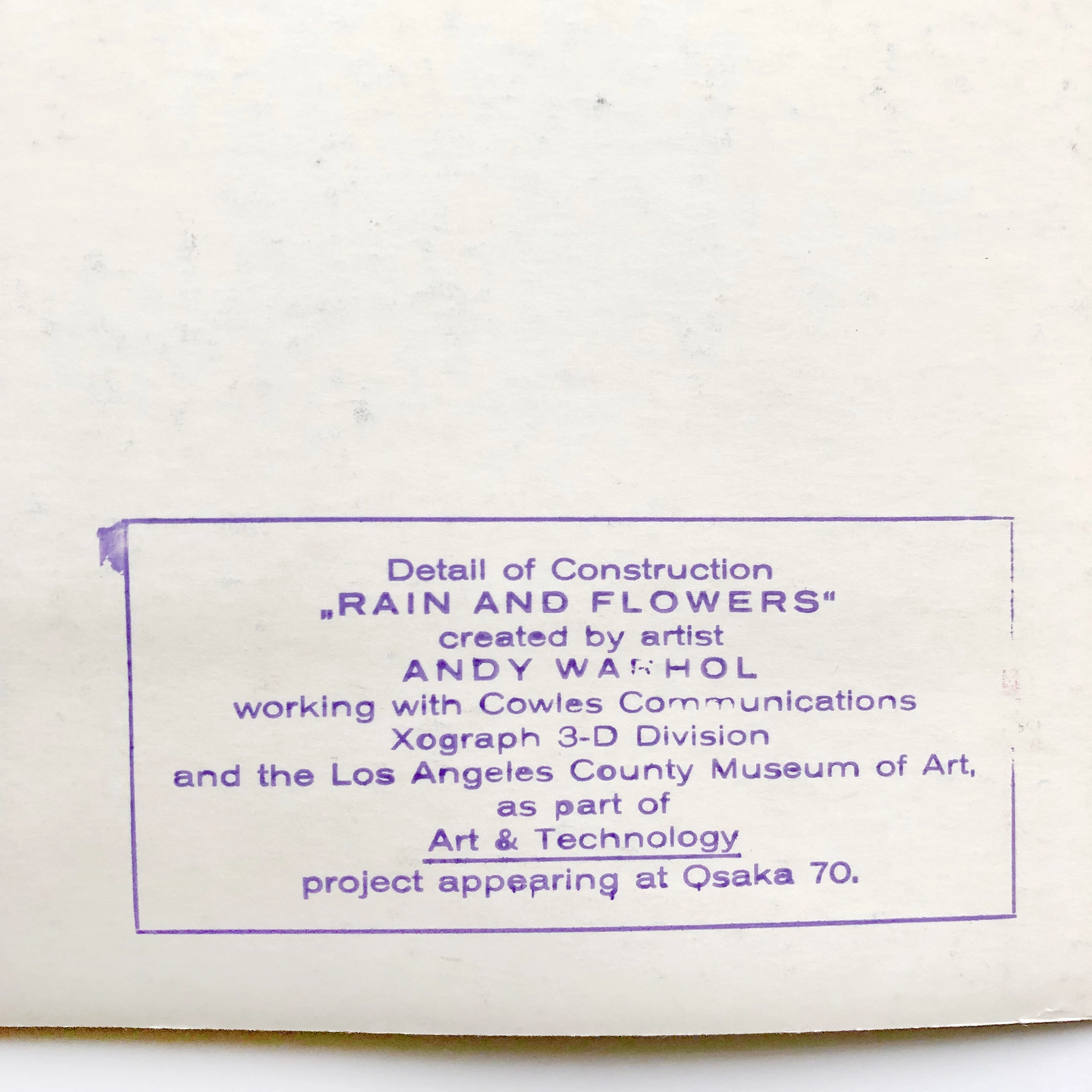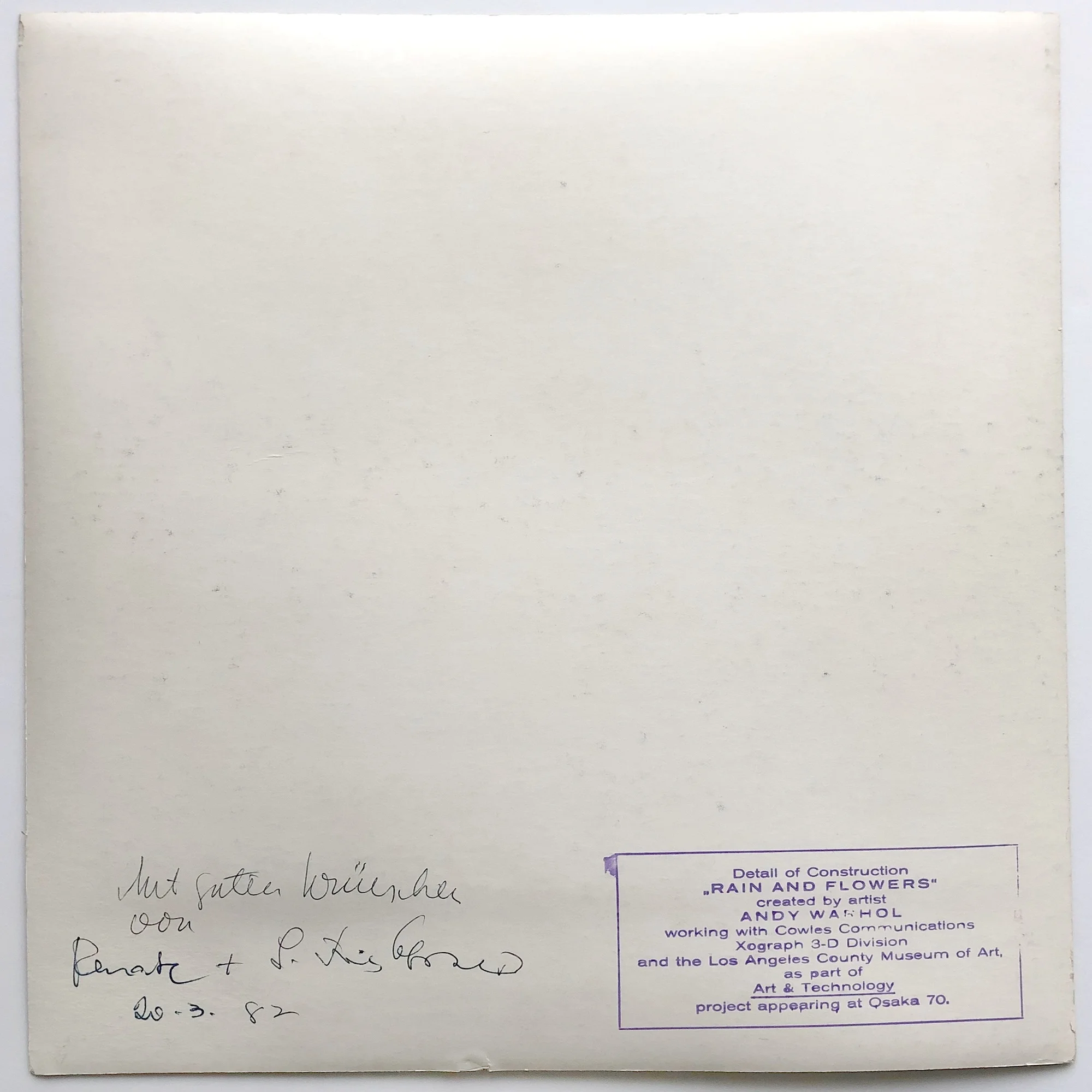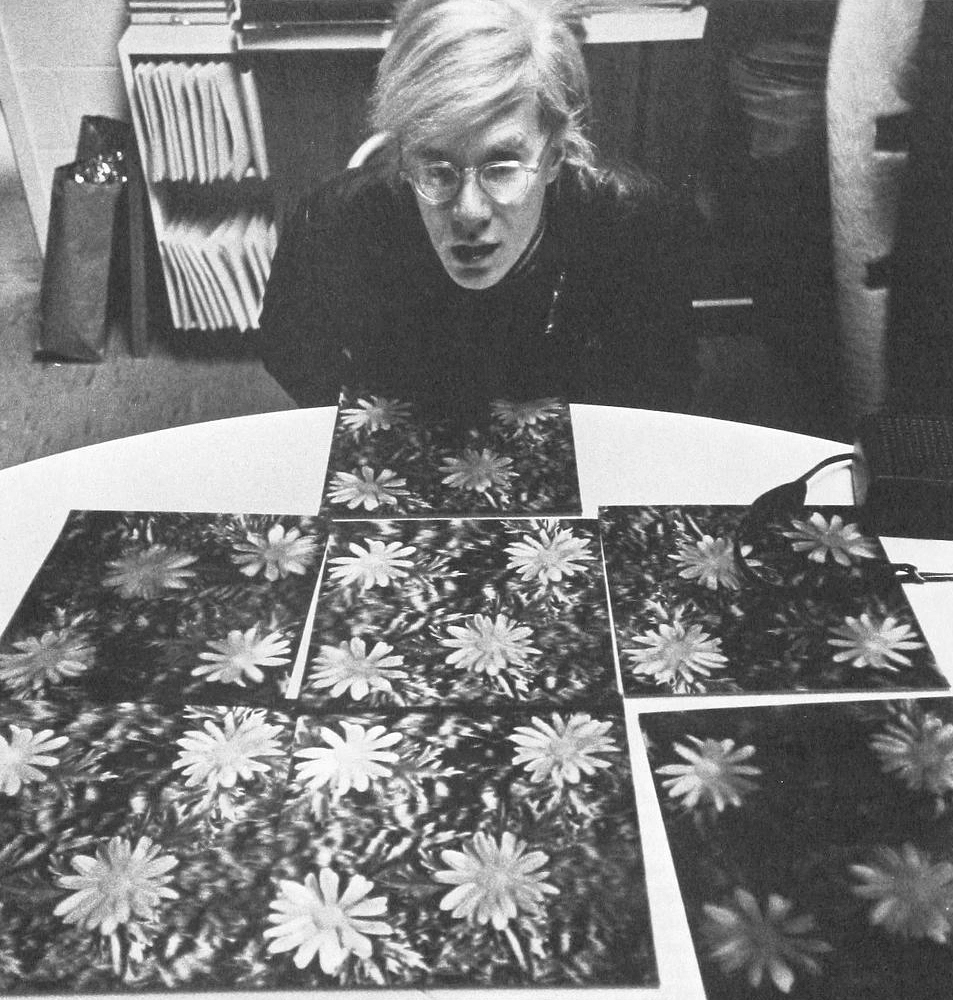Andy Warhol
Rain and Flowers, 1970
lenticular print in colors, laid to heavy wove paper
12 x 11 inches
frame: 13 1/4 x 12 1/4 inches
edition of unknown size
stamped in purple ink on the reverse "Detail of Construction RAIN AND FLOWERS created by artist ANDY WARHOL working with Cowles Communications Xograph 3-D Division and the Los Angeles County Museum of Art, as part of Art & Technology project appearing at Osaka 70"
published by Cowles Communications and the Los Angeles County Museum of Art on the occasion of Osaka 70
Literature
Tokyo Museum of Contemporary Art, eds., Andy Warhol 1956-1986: Mirror of his Time, Tokyo, 1996, illustrated on p. 183; M. Wrbican, "Andy Warhol: A Documentary Film," American Masters, pbs.org online content, September 20, 2006
Exhibitions
Osaka, United States Pavilion, Expo '70, 1970
12 x 11 inches
frame: 13 1/4 x 12 1/4 inches
edition of unknown size
stamped in purple ink on the reverse "Detail of Construction RAIN AND FLOWERS created by artist ANDY WARHOL working with Cowles Communications Xograph 3-D Division and the Los Angeles County Museum of Art, as part of Art & Technology project appearing at Osaka 70"
published by Cowles Communications and the Los Angeles County Museum of Art on the occasion of Osaka 70
Literature
Tokyo Museum of Contemporary Art, eds., Andy Warhol 1956-1986: Mirror of his Time, Tokyo, 1996, illustrated on p. 183; M. Wrbican, "Andy Warhol: A Documentary Film," American Masters, pbs.org online content, September 20, 2006
Exhibitions
Osaka, United States Pavilion, Expo '70, 1970
Additional Photos
In February 1969, Andy Warhol met with Maurice Tuchman and Fine Art Curators from the Los Angeles County Museum of Art to collaborate on the seminal Art and Technology project. By June 1969, Andy Warhol was connected with Cowles Communications in New York and contracted with LACMA to create work for A&T, specifically to be exhibited at EXPO 70 in Osaka and then a year later at LACMA.
